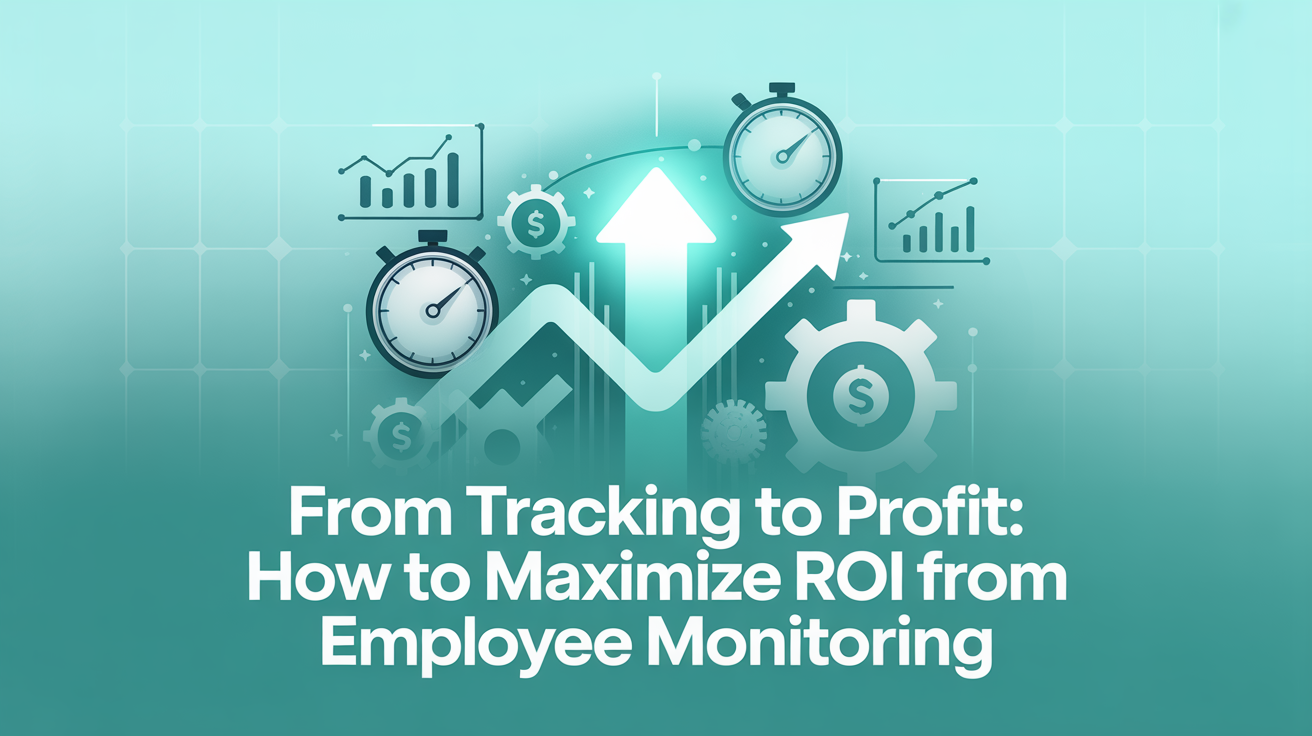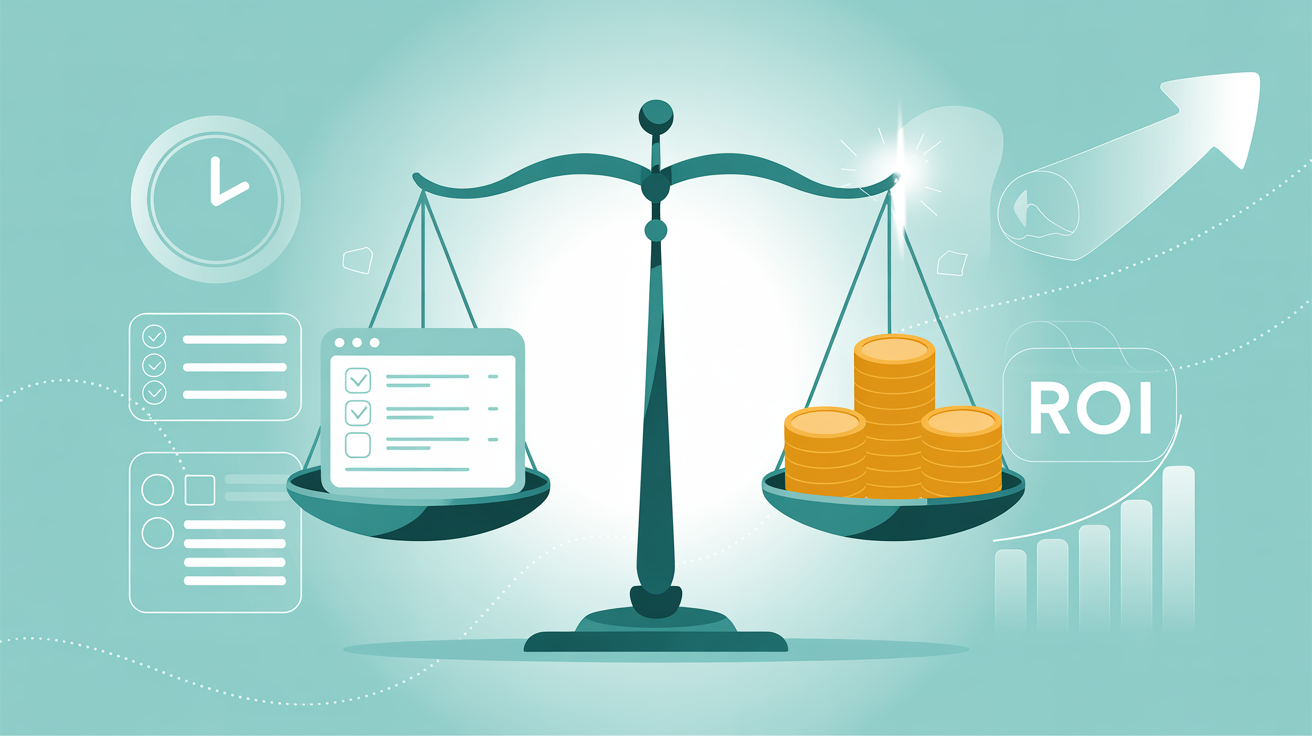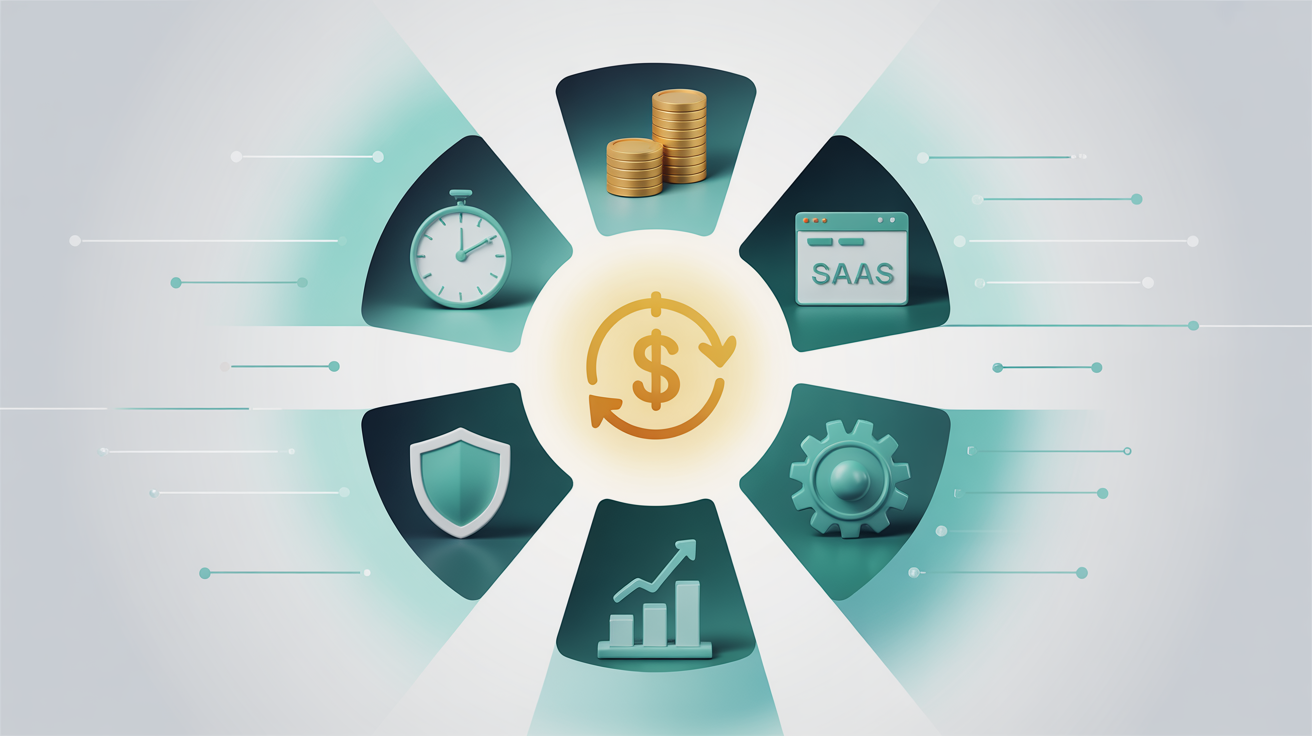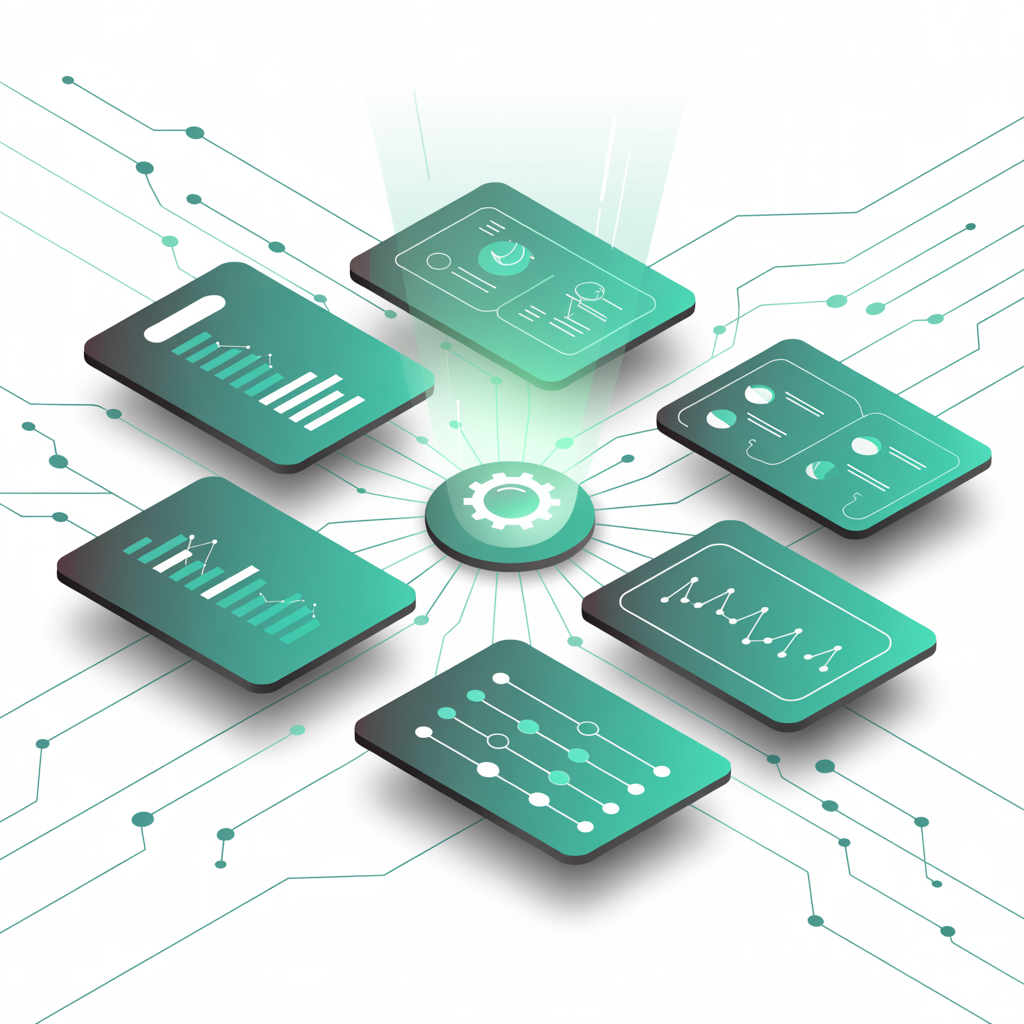How to Maximize ROI on Employee Monitoring Software

Key Takeaways:
-
ROI isn’t just about tracking time; it’s about turning employee data into smarter decisions and measurable growth.
-
Transparent monitoring backed by clear KPIs builds trust, boosts engagement, and reduces turnover.
-
Integrating analytics, training insights, and performance metrics drives sustainable productivity gains.
-
Balancing technology with employee privacy and communication delivers the highest long-term ROI.
Employers who think tracking time and attendance is the only ROI metric for employee monitoring software are completely wrong!
It’s about translating employee activity data into smarter decisions, stronger engagement, and measurable growth.
If you’re looking for the best ways to optimize the ROI, which levers to identify, then you’re in luck!
In this article
Why Measure ROI for Employee Monitoring?
I get it when some employers think that just finding out who’s not working is enough. They can just fire that person and hire an energetic, productive one!

However, what they don’t realize is that employee monitoring goes far beyond that. It’s about deciding whether specific monitoring activities and tools produce measurable business outcomes.
That’s why you need to measure ROI to:
- Quantify Real Business Value: Provides clear insights on whether employee monitoring can actually increase productivity and reduce costs.
- Optimize Cost Efficiency: Identifies unnecessary software usage, unproductive employee work hours.
- Support Employee Development: Reveals where training programs or learning initiatives can improve employee productivity.
- Enhance Decision-making: Turns employee activity data into decision-making action points.
- Negotiate with the Board: Offers clarity to communicate about the gains compared to the recurring cost.
If you don’t measure the ROI properly, your employees will get disengaged at some point. And you will be adding to the $438 billion lost in 2024 due to disengagement.
Start measuring what matters
6 Revenue and Cost Levers in Employee Monitoring ROI
To maximize ROI, break the problem into the precise levers that monitoring can influence.

These levers will help you to properly capture the actual ROI from employee monitoring and define a perfect metric to track it regularly.
Track all 6 levels with automated monitoring
1. Recover Lost Productive Hours
This is a key revenue driver that will directly increase or decrease your employee monitoring ROI.
Suppose your workforce (20 employees) were losing 2 hours (blended) of productivity each day.
With monitoring, you can reduce it to 1 hour per day/employee.
So, in the first month alone, you are saving at least (20*5) = 100 hours!
If with a bigger team, the savings get bigger as well. So does your ROI!
That’s why you need to monitor active computer time, focused app usage, task-switching frequency, and idle time to find out why productivity is falling.
Recover lost hours with real-time tracking
2. Improve Billable Utilization and Throughput
For the support team, billable hours vs logged hours has been an issue for ages. However, with time tracking, you will know the exact number of hours worked.
Accurate time tracking software + monitoring reduces under-billing and improves quoting fidelity. Couple that with Time-to-resolution for tickets & average handling time tracking, you have the perfect system to drive ROI up!
3. Reduce Software License & SaaS Waste
Before monitoring, I didn’t realize that my team relies on 5 paid apps in total. But the actual number of software licenses and SaaS subscriptions?
11!
That was the light-bulb moment for me. I quickly removed the waste and minimized the cost.
You won’t even get the full picture of SaaS waste unless you have the data to back it up. And that’s exactly what employee monitoring will enable for you.
Identify unused apps and cut software costs
4. Lower Risk & Incident Cost
Anomaly detection, instant alerts, and asset recovery all of these generally remain unaccounted for when calculating the ROI of monitoring software.
However, these can reduce your website management cost, asset recovery cost, and more, which will save you thousands of dollars.
5. Improve Employee Development & Performance Management
Trained and skilled employees are your assets. Investing in their skills can deliver you ROI like no other. However, it’s tough to identify which of the employees needs exactly what.
That’s where monitoring helps with performance analytics to prepare a report on what kind of training they need. This type of initiative proves to be really effective for employee turnover reduction.
6. Optimize Staffing and Reduce Churn
While it’s not the ideal case, some of your employees might not be a good fit. And regular monitoring will reveal all the proof for justification. Sometimes, reducing the staff can help lower employee churn.
When you map each lever to the expected dollar impact and the data source (monitoring, HRIS, LMS, or surveys), you create a defensible ROI model that finance and HR can agree on.
Build your ROI model with employee performance data
Best Practices to Maximize Employee Monitoring ROI
This is the only thing you need if you want to protect employee data, lift employee engagement, and maximize value from performance data:

Choose the Best Software for You
All employee monitoring software systems are not made the same way. Choose a platform that:
- Reveals the KPIs & performance metrics you need
- Integrates perfectly with your required applications
- Supports configurable data retention
- Offers features for manager coaching and employee-facing dashboards
Whatever you do, make sure to take a proper quotation including the customizations you need.
Set Clear Objectives and KPIs
Without defining your objectives and setting the KPIs, your monitoring plans will fade into oblivion. For example, you can start with a few KPIs like:
- Billable utilization
- Average hours recovered per week
- SaaS license wastage reduced
- Average time to resolve queries
Assign each KPI to an owner (admin), a data source, and a reporting schedule.
Track custom KPIs with powerful dashboards
Perfect Integration with Other Tools & Apps
If you’re already using a few 3rd party software like Jira, Microsoft Teams, Slack, etc, then make sure your monitoring software supports them. Because these integrations will help you maximize your ROI:
For example, link monitoring data to project management systems to improve performance measurement and forecasting. Similarly, combine employee activity data (employee demographics) and HR signals to detect retention risks early.
Integration lets you see the bird's-eye view and ease the ROI calculation for you.
Connect with Jira, Asana, ClickUp & more
Ensure Transparent Policies & Communication for Better Adoption
Transparency is the key to unlocking the full potential of your employees. Look, all of your employees will give in reluctantly to monitoring policies even if they don’t want to. However, if you maintain transparent policies from the start, it will boost the morale of your employees significantly.
Create a proper communication channel to communicate:
- What is tracked, why it’s tracked, how long data is kept, who sees it, and how it will be used.
- Policies around employee consent, and provide opt-in/opt-out paths where legally required.
Transparent programs, especially where data is used for coaching and development, sustain morale and reduce churn.
Guide & Train Your Employees Properly
Monitoring yields the best results & ROI when you add training initiatives and manager coaching. Use a complete training session when you deploy the employee monitoring tools. Use dashboards for coaching conversations and drive business growth together.
Additionally, make the dashboard public and publish improvements in performance reviews and recognition programs. These recognition and appreciation initiatives go a long way.
Use Analytics To Optimize Processes
Raw data can only tell so much, but analysis will reveal anomalies, inefficiencies, and more. Use dashboards to check frequent task-switching, long after-hours idle periods, or underused tools.
Once you find that, you can carry out employee feedback sessions and an employee survey. Finally, prepare training programs targeted at employees to close the process gaps.
Turn activity data into actionable insights
Update Monitoring Systems Regularly
Businesses continuously change, and so should the monitoring systems. Review monitored apps, thresholds, and policies, and configure them depending on the requirements.
It can be a shift from task-level time tracking to outcome-based metrics or removing an unnecessary app from the system. Whatever it is, don’t settle down even when things are running smoothly.
Regular configuration improves signal-to-noise and keeps monitoring focused on measurable business outcomes.
Some Concerns About Employee Monitoring
Employee monitoring is great for employee productivity and performance management when it’s done right. If not, it breaches employee privacy, trust, and workplace culture.
You can’t just ignore employee satisfaction and go with the flow, can you?
Privacy and Data Security Risks
Monitoring often involves collecting sensitive employee data, such as activity logs, app usage, or even screenshots. Without strict controls, this can lead to data misuse or breaches.

If you think that you don’t want to take consent, then be prepared to pay up to 75,000 euros, like this Florida-based software company had to!
Impact on Employee Morale and Trust
Excessive monitoring or vague policies breed confusion and anxiety instead of trust. These hurt employee morale and overall productivity. Over 90% of employees ask for proper disclosure of employee monitoring.
So, building transparent systems, offering employee feedback channels are crucial if you want to gain the most ROI!
Ethical Use of Monitoring Technology
Emerging technologies like machine learning and Generative AI can analyze employee activity data or predict performance issues.
While powerful, they raise ethical employee monitoring concerns around bias, autonomy, and fairness. Responsible use requires oversight, bias checks, and human review before acting on automated insights.
Over-Reliance on Quantitative Metrics
It’s great if you use monitoring data for measurable key performance metrics. However, it’s completely unfair to ignore the qualitative significance and support of employees.
Balancing data with qualitative feedback and employee recognition programs is the best way to bring the best out of your team.
Conclusion
Employee monitoring can deliver the best ROI when it becomes a tool for improving employee engagement, development, and cost efficiency.
When you try to micromanage, use unclear tactics, your cost increases, and productivity plummets. So, be transparent and ethical, and you will easily go beyond the ROI you’re hoping for!
Start maximizing ROI with smart monitoring
Frequently Asked Questions about Employee Monitoring ROI
How soon will we see ROI?
Expect early signals in 6–12 weeks; full, measurable ROI (including training and license savings) typically appears within 6–12 months.
What basic privacy safeguards do we need?
Provide notice, limit data collection to purpose, enforce retention rules, restrict access, and obtain employee consent where required.
Will monitoring hurt morale?
It can be if it’s used punitively, but when oriented toward coaching, recognition, and development, it typically improves employee satisfaction and morale.
Which KPIs should we track first?
Start with 3to 5 KPIs such as billable utilization, hours recovered per employee, SaaS license usage, etc.
Should monitoring data be used in performance reviews?
Use it as one input for coaching and calibration, combined with quality metrics, manager observations, and employee feedback.
